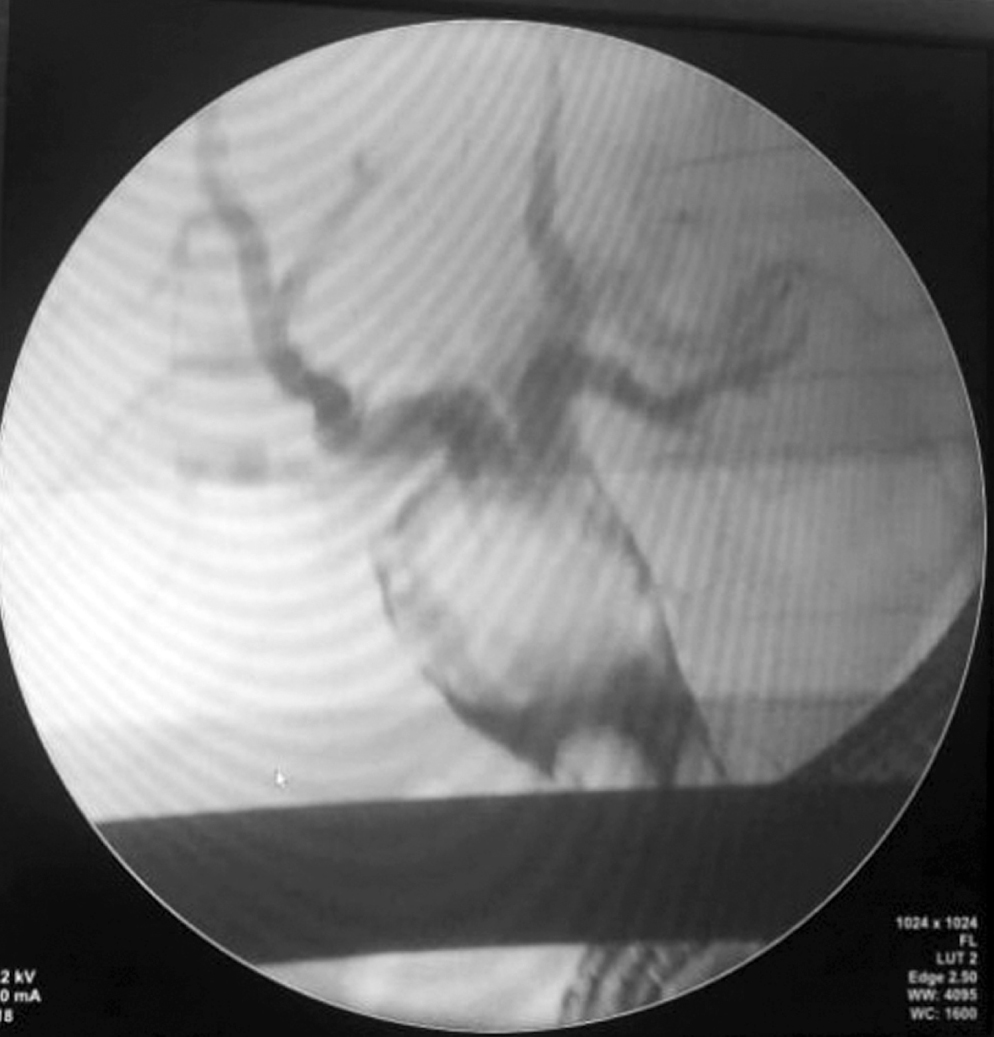Hemobilia, a rare cause of upper gastrointestinal bleeding
DOI:
https://doi.org/10.22516/25007440.626Keywords:
Hemobilia, gastrointestinal bleeding, biliary tractAbstract
Hemobilia is a rare cause of upper gastrointestinal (GI) tract bleeding. Its main etiology is iatrogenic, and
the possibility of hemobilia should be considered in any patient with GI bleeding and a recent history of
hepatobiliary surgery. Other less frequent causes include abdominal trauma, oncologic disease of the biliary
tract, or inflammatory diseases of the pancreas or bile duct. Its clinical presentation varies depending on the
severity of the bleeding. It usually presents with abdominal pain, jaundice, and tarry stools, although patients
may also present with rectorrhagia and hypotension on admission. A high percentage of these symptoms
have a spontaneous resolution, without requiring additional procedures. Angiography is the gold standard for the diagnosis of hemobilia, but advances in computed tomography angiography make it a less invasive and more widely available option. Endovascular embolization is the main treatment for these patients, but there are other alternatives such as vascular or bile duct stent placement.
Downloads
References
Trombatore C, Scilletta R, Bellavia N, Trombatore P, Magnano S Lio V, Petrillo G, et al. Acute hemobilia from a pseudoaneurysm of the cystic artery arising from the left hepatic artery: Case report and literature review. Int J Surg Case Rep. 2017;37:60-64. https://doi.org/10.1016/j.ijscr.2017.06.014
Yopp A. Hemobilia and bilhemia. En: Blumgart LH (editor). Surgery of the liver, biliary tract and pancreas. 5.a edición. Filadelfia: Elsevier; 2012. p. 1067-81. https://doi.org/10.1016/B978-1-4377-1454-8.00105-3
Baillie J. Hemobilia. Gastroenterol Hepatol (N Y). 2012;8(4):270-2.
Hidalgo F, Narváez JA, Reñé M, Domínguez J, Sancho C, Montanyà X. Treatment of hemobilia with selective hepatic artery embolization. J Vasc Interv Radiol. 1995;6(5):793-8. https://doi.org/10.1016/s1051-0443(95)71187-3
Chin MW, Enns R. Hemobilia. Curr Gastroenterol Rep. 2010;12(2):121-9. https://doi.org/10.1007/s11894-010-0092-5
Green MH, Duell RM, Johnson CD, Jamieson NV. Haemobilia. Br J Surg. 2001;88(6):773-86. https://doi.org/10.1046/j.1365-2168.2001.01756.x
Merrell SW, Schneider PD. Hemobilia--evolution of current diagnosis and treatment. West J Med. 1991;155(6):621-5.
Sandblom P. Hemorrhage into the biliary tract following trauma; traumatic hemobilia. Surgery. 1948;24(3):571-86.
Luu MB, Deziel DJ. Unusual complications of gallstones. Surg Clin North Am. 2014;94(2):377-94. https://doi.org/10.1016/j.suc.2014.01.002
Yoshida J, Donahue PE, Nyhus LM. Hemobilia: review of recent experience with a worldwide problem. Am J Gastroenterol. 1987;82(5):448-53.
Gandhi V, Doctor N, Marar S, Nagral A, Nagral S. Major hemobilia--experience from a specialist unit in a developing country. Trop Gastroenterol. 2011;32(3):214-8.
Murugesan SD, Sathyanesan J, Lakshmanan A, Ramaswami S, Perumal S, Perumal SU, et al. Massive hemobilia: a diagnostic and therapeutic challenge. World J Surg. 2014;38(7):1755-62. https://doi.org/10.1007/s00268-013-2435-5
Casazza I, Guglietta MA, Argento G. Magnetic resonance cholangiopancreatography in the diagnosis of haemobilia. Case Rep Radiol. 2013;2013:792109. https://doi.org/10.1155/2013/792109
Prasad TV, Gupta AK, Garg P, Pal S, Gamanagatti S. Minimally invasive image-guided interventional management of Haemobilia. Trop Gastroenterol. 2015;36(3):179-84. https://doi.org/10.7869/tg.280
Cao H, Liu J, Li T, Cao G, Xu G, Zhai S, Xue J, Wang Z, Shi S, Bai W. Interventional therapy for the treatment of severe hemobilia after percutaneous transhepatic cholangial drainage: a case series. Int Surg. 2013;98(3):223-8. https://doi.org/10.9738/INTSURG-D-13-CC194

Downloads
Published
How to Cite
Issue
Section
License
Aquellos autores/as que tengan publicaciones con esta revista, aceptan los términos siguientes:
Los autores/as ceden sus derechos de autor y garantizarán a la revista el derecho de primera publicación de su obra, el cuál estará simultáneamente sujeto a la Licencia de reconocimiento de Creative Commons que permite a terceros compartir la obra siempre que se indique su autor y su primera publicación en esta revista.
Los contenidos están protegidos bajo una licencia de Creative Commons Reconocimiento-NoComercial-SinObraDerivada 4.0 Internacional.



















